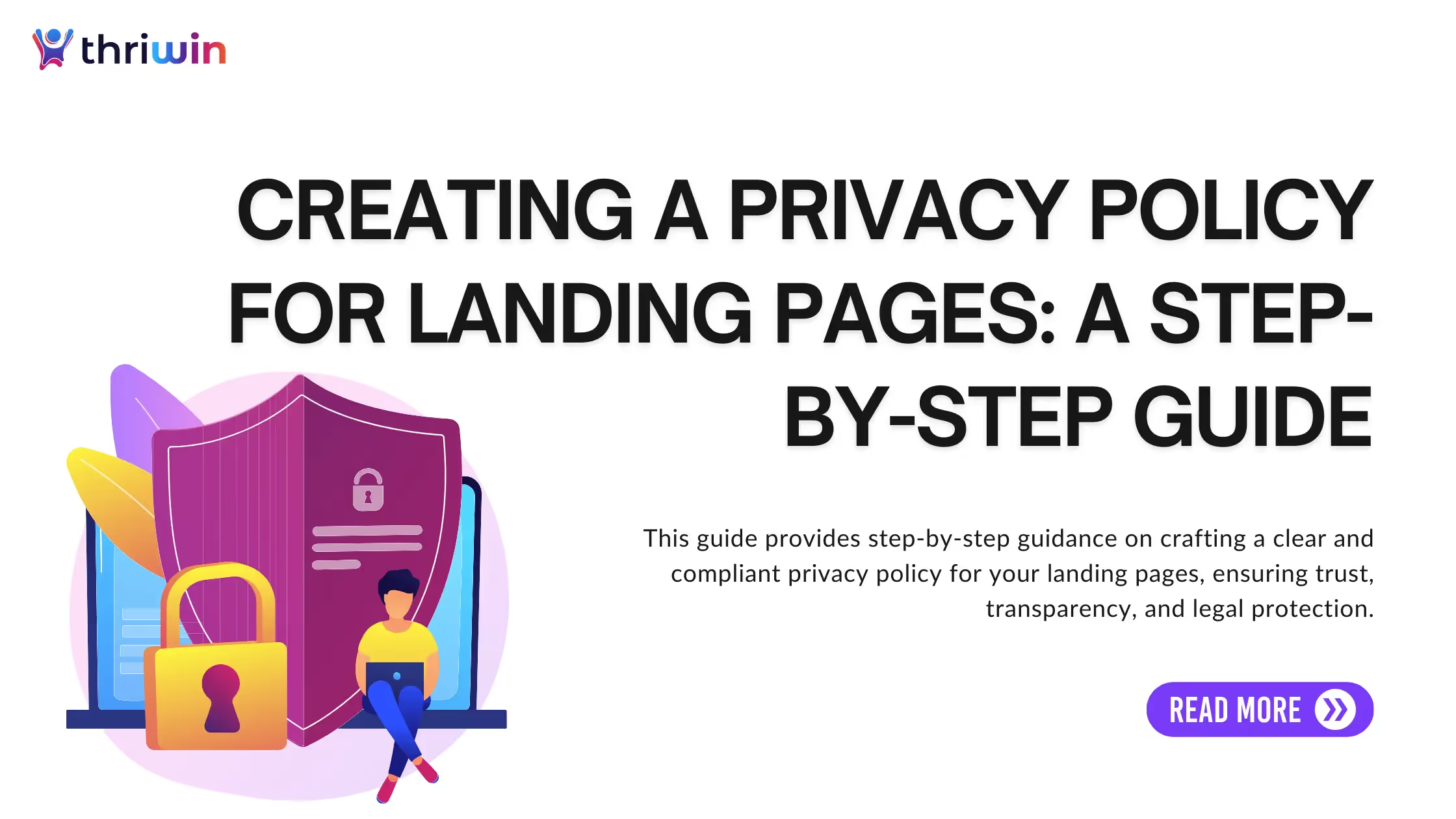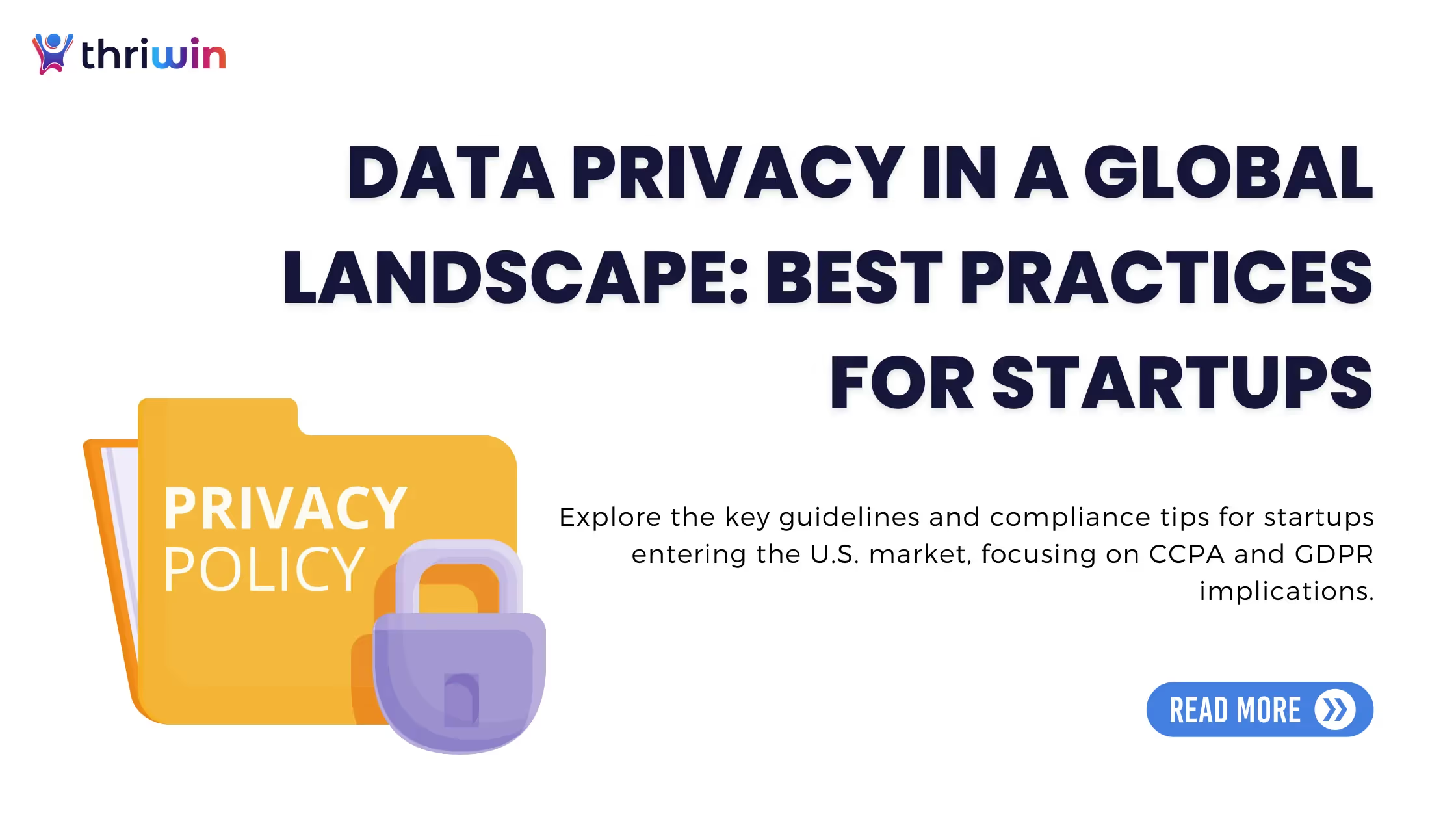Having a privacy policy on your landing page isn’t just about ticking a legal box. It's vital for establishing trust with your visitors and protecting their sensitive information. A well-written privacy policy spells out exactly how you handle user data—how it’s collected, stored, and used—helping you avoid legal headaches while putting your customers at ease. Whether it’s complying with regulations like GDPR or CCPA, or simply showing that you value transparency, a clear privacy policy is a must. This guide will walk you through the steps to create one that safeguards both your business and your customers.
Why Your Website Needs a Privacy Policy
A privacy policy is more than just a legal formality; it’s a fundamental component of a trustworthy and transparent online presence. Having a clear and concise privacy policy is essential for landing pages where user interaction often begins. It ensures compliance with regulations, fosters trust, and protects your business from potential legal issues.
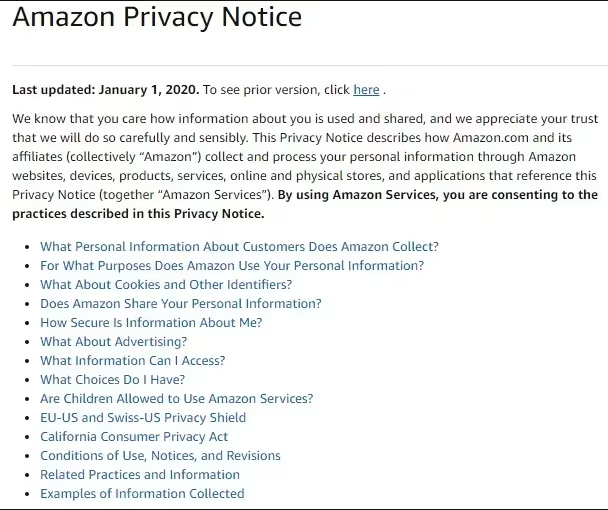
Let’s explore why a privacy policy is vital for your landing pages.
1. Legal Compliance
Privacy policies are legally mandated in many regions, including under the General Data Protection Regulation (GDPR) in Europe and the California Consumer Privacy Act (CCPA) in the U.S. These regulations require businesses to inform users about the data they collect, how it's used, and who it’s shared with. Not following the rules can result in steep fines and legal action. Therefore, including a privacy policy on your landing page is not just best practice but a legal necessity.
2. Building User Trust
Transparency is key to gaining and maintaining user trust. Visitors who see a clear privacy policy feel more confident that their personal information is handled responsibly. Building this trust can result in higher conversion rates, as users are more inclined to engage with a site that values their privacy. A transparent privacy policy demonstrates your commitment to protecting user data, fostering a sense of security and credibility.
3. Protecting Your Business
A well-crafted privacy policy builds trust and acts as a protective shield for your business. By explicitly stating how data is handled, You lower the chance of misunderstandings and possible legal issues. It is a documented agreement between you and your users, clearly outlining the terms for collecting and using data. This clarity can prevent conflicts and help your business avoid costly legal battles.
4. Enhancing Transparency and Accountability
In an era where data breaches and misuse of personal information are major concerns, a privacy policy helps enhance transparency and accountability. It provides a framework for how your organization handles data, making it easier to demonstrate compliance with legal standards and ethical practices. This transparency reassures users that your business is committed to responsible data management, which is increasingly important in today’s digital landscape.
5. Meeting User Expectations
Modern consumers expect businesses to be upfront about how their data is used. A detailed privacy policy meets this expectation by providing clear information about your data practices. Users are more likely to engage with a business that respects their privacy preferences and keeps them informed. Meeting these expectations can increase user satisfaction and loyalty, contributing to long-term business success.
What Should You Include in Your Landing Page Privacy Policy
When crafting your landing page privacy policy, it's essential to clearly outline how user data is managed. From how you collect and store information to the rights users have, covering these key areas not only keeps you legally compliant but also builds trust. Let’s break down what you should include to make your privacy policy comprehensive and user-friendly.
1. Data Collection and Usage
Your privacy policy should clearly outline what types of data you collect from users, including names, email addresses, phone numbers, and other personal details. Additionally, it should specify how this data is used—whether for marketing, customer service, or analytics purposes. Transparency about data collection practices helps users feel more comfortable sharing their information.
Example: A newsletter signup form on an e-commerce landing page might collect a user’s name and email. The privacy policy should explain that this data will be used to send promotional emails or special offers.

2. Data Storage and Protection
It’s important to reassure users that their data is stored securely. Your privacy policy should detail where the data is stored—whether on internal servers or cloud-based systems—and the measures taken to protect it, such as encryption, access control, and regular security audits. This section demonstrates your commitment to safeguarding user information from potential breaches.
Example:Saas companies often use secure encryption to store user data in the cloud. Their privacy policy outlines that data is protected by firewalls and regular security checks, giving users peace of mind.
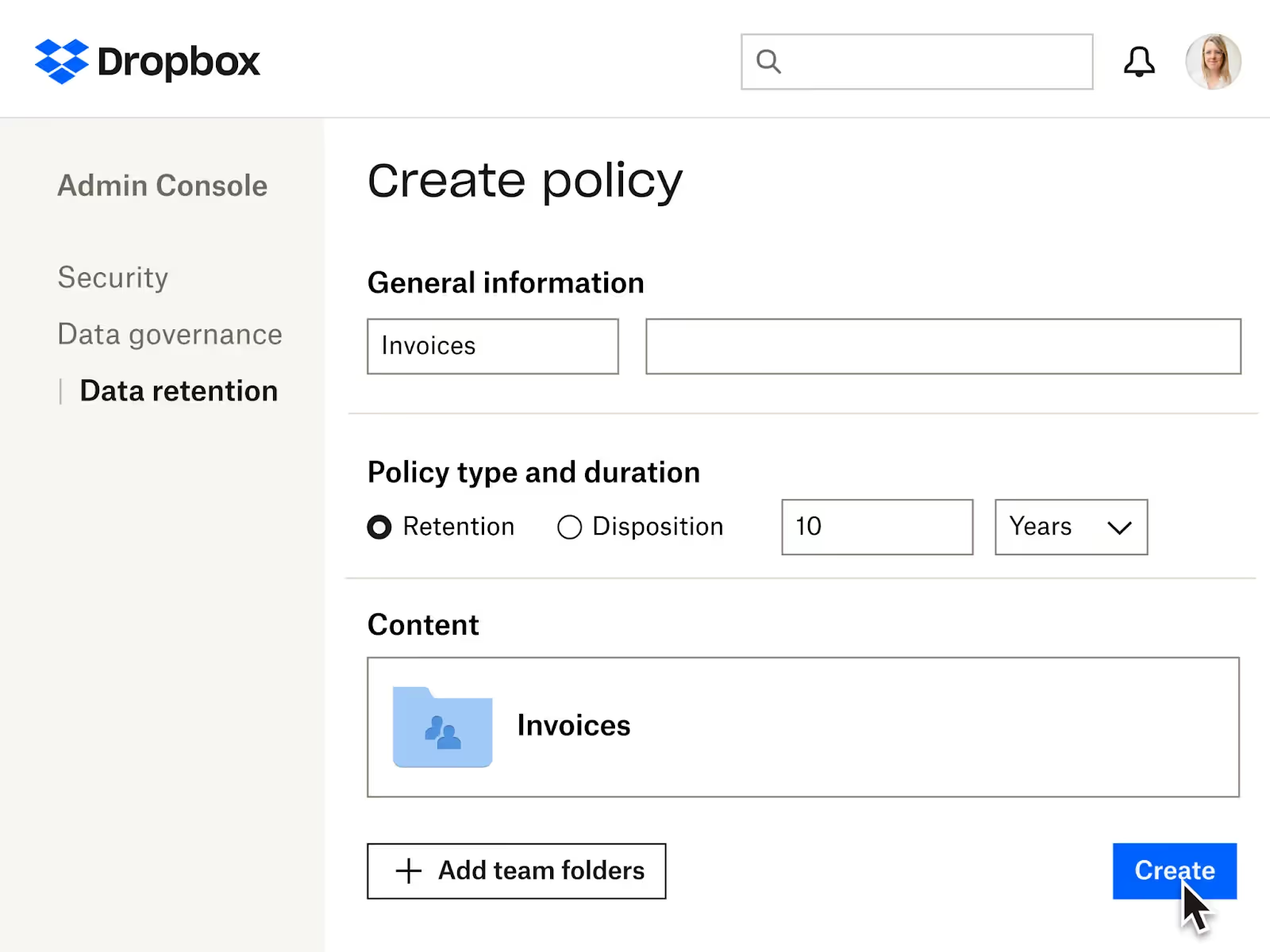
3. User Rights
Users can access, correct, or delete their data. This section should clearly explain how users can exercise these rights, including the process for requesting access to their data, updating incorrect information, or deleting it entirely. Providing this transparency enhances user trust and ensures compliance with privacy regulations like GDPR.
Example: A user downloading an ebook might later decide to unsubscribe from emails or request that their data be deleted. The privacy policy should include instructions on contacting the company for such requests.

4. Third-Party Sharing
If you share user data with third parties—such as marketing agencies, analytics services, or payment processors—your privacy policy must explain this. It should include details about who you share the data with, why it’s shared, and what steps are taken to protect it. Transparency in third-party sharing is crucial for user confidence and legal compliance.
Example: An online retailer may share customer data with third-party payment processors to complete purchases. The privacy policy should clearly state that personal data is shared with these third parties solely for transactional purposes.

5. Cookies and Tracking
Cookies and other tracking technologies are often used on landing pages to gather behavioral data. Your privacy policy should inform users about the types of cookies you use, how they function, and how users can opt out of cookie tracking. Providing this option is particularly important for compliance with regulations like GDPR and CCPA.
Example: A website uses cookies to track user behavior for personalized ads. The privacy policy should allow users to manage cookie preferences or opt-out entirely.

6. Contact Information
Lastly, your privacy policy should offer users a direct way to get in touch if they have any concerns or questions. This section should include a dedicated email address, phone number, or web form for privacy-related inquiries, ensuring users can easily reach you to address any issues with their data.
Example: A business includes a contact form or dedicated email for privacy concerns, ensuring users can easily get help with any data-related issues.

10 Steps to Creating a Privacy Policy for Your Landing Pages
Creating a privacy policy for your landing pages is crucial for ensuring legal compliance and fostering trust with your audience. A well-crafted privacy policy ensures transparency and gives users confidence in how their personal information is managed. Here’s a comprehensive guide on how to structure your privacy policy effectively.
1. Identify the Data You Collect
Start by listing the types of data your landing page collects. This can include both personal data—such as names, email addresses, phone numbers, and payment details—and non-personal data like IP addresses, browsing behavior, and cookies.
How the Data Is Collected
Clarify how this data is gathered. Common methods include:
- Web Forms: Registration or sign-up forms for newsletters, webinars, or purchases.
- Cookies: Used for tracking user behavior or preferences.
- Third-Party Integrations: Tools like Google Analytics or Facebook Pixel that collect data for insights and ad targeting.
Being transparent about how data is collected helps users understand the process and builds trust.
2. Explain How the Data Will Be Used
After listing the types of data collected, it’s essential to clarify why you're collecting it and how it will be used. Some common uses include:
- Marketing: Sending targeted emails, newsletters, or promotional content.
- Customer Support: Handling user inquiries, personalizing support experiences, or resolving issues.
- Analytics: Understanding user behavior, improving website functionality, and optimizing performance.
Providing clear reasons for data collection helps reassure users that their information will be used responsibly and ethically.
3. Specify How Data is Shared with Third Parties
Be transparent about whether data is shared with third-party services. You should include:
- Who the data is shared with: For example, payment processors, marketing agencies, or analytics providers.
- Why the data is shared: For processing payments, marketing purposes, or enhancing website functionality.
- How the data is protected during sharing: Include the security measures taken to ensure data remains safe during transfers.
Being upfront about third-party sharing builds credibility and shows users you have their privacy in mind.
4. Detail How You Protect Data
Users want to know their information is safe. Outline the security measures you take to protect data from breaches or misuse:
- Encryption: Explain whether you encrypt data in transit or at rest.
- Access Control: Specify who has access to user data within your organization.
- Regular Security Audits: Mention any ongoing assessments or updates to security protocols.
These assurances help users feel more secure when sharing their personal information on your site.
5. Highlight Users’ Rights
A critical part of your privacy policy is explaining the rights users have over their data. This is especially important for complying with laws like GDPR and CCPA. Ensure your policy includes:
- Access Rights: Users can request access to the personal data you have on file.
- Correction Rights: Users have the ability to correct or update their information.
- Deletion Rights: Users can request that their data be deleted.
- Opt-Out Options: Give users the option to opt out of certain data collection practices like tracking or marketing emails.
Providing clear instructions for how users can exercise these rights will foster trust and show your commitment to transparency.
6. Discuss Compliance with Legal Requirements
Compliance with data privacy laws is non-negotiable. In your privacy policy, highlight the relevant regulations you comply with, such as:
- GDPR (General Data Protection Regulation): Applies to users in the EU and governs how their personal data is handled.
- CCPA (California Consumer Privacy Act): Applies to California residents and gives them more control over their data.
- Other International Laws: Depending on your user base, other privacy laws might also apply, such as the Brazilian LGPD or Canada’s PIPEDA.
By ensuring that your privacy policy is aligned with legal standards, you safeguard your business from penalties while building trust with users.
7. Provide a Section on Cookies and Tracking
Explain the role of cookies and tracking technologies on your landing pages. Users need to know:
- What types of cookies you use: Functional, performance, or advertising cookies.
- How cookies collect data: Tracking user behavior, preferences, or log-ins.
- How users can control cookies: Offer options to accept, decline, or modify cookie preferences.
Complying with regulations like GDPR may also require you to offer users the ability to opt out of cookies or other tracking mechanisms.
8. Ensure Transparency About Data Retention
Let users know how long you’ll keep their data. Being upfront about data retention policies adds a layer of transparency and accountability. You can outline data retention practices based on several factors:
Data Retention Based on the Type of Data
Not all data needs to be stored indefinitely. Explain how different types of data will be handled based on its purpose:
- Personal Data: User contact information like emails and phone numbers may be retained for marketing or communication purposes until the user unsubscribes or requests deletion.
- Financial Data: Payment details might be retained for transaction records, fraud prevention, or compliance with accounting requirements for a set period.
- Analytics Data: Website browsing behavior and cookies may be retained for analytical purposes but often have a shorter retention period compared to personal or financial data.
User Consent and Data Deletion
Ensure your privacy policy offers users the option to control the retention of their data. Include:
- Consent Withdrawal: Enable users to revoke their consent to store or use their data at any time.
- Data Deletion Requests: Clearly outline how users can request that their data be deleted from your servers.
Compliance with Legal Retention Requirements
Make sure your data retention policies comply with local laws and regulations. Some legal requirements may mandate that you retain certain data for specific durations:
- Tax and Financial Records: Depending on your region, you may be required to retain financial transaction data for several years.
- User Consent Logs: In regions like the EU, you may need to store consent logs for GDPR compliance.
Being transparent about retention policies helps users understand why their data is retained and reassures them that their privacy is respected.
9. Include Contact Information
Your privacy policy should provide a clear way for users to reach out if they have questions or concerns about their data. Offer multiple contact options:
- Dedicated Email Address: For privacy-related inquiries.
- Phone Number: To speak with a representative if necessary.
- Web Form: A direct way for users to request information or data changes.
Having a contact section makes it easy for users to get help and reassures them that you’re open to addressing their privacy concerns.
10. Review and Update Regularly
Privacy laws and business practices evolve over time, so it's essential to keep your privacy policy up-to-date. Set a routine for:
- Annual Reviews: Check for any updates needed due to new laws or changes in data practices.
- Real-Time Updates: Make changes promptly when introducing new data collection methods or partnerships.
Keeping your privacy policy current ensures compliance and continued trust from your users.
Where To Display Your Landing Page’s Privacy Policy
Ensuring that your privacy policy is easily accessible to users is just as important as having one. A well-placed privacy policy link demonstrates transparency and a commitment to user rights. Here are the best practices for where to display your privacy policy on landing pages:
- Footer Section:
One of the most common places to display your privacy policy is in the footer of your landing page. The footer appears on every page, making it easily accessible no matter where users navigate on your site. This placement doesn’t interrupt the user experience but ensures visitors can always find the privacy policy.

- Within Forms:
If your landing page collects personal information through forms (e.g., for signing up for newsletters, webinars, or making purchases), it’s essential to include a privacy policy link next to the submit button. This reassures users that their data is being collected and handled in compliance with privacy regulations before they provide it.

- Cookie Consent Banners:
If you use cookies or tracking technologies, especially in regions governed by GDPR, consider displaying a pop-up banner that informs users about cookies. Include a link to your privacy policy in the banner, allowing users to review it before consenting to cookie usage. This helps you remain compliant while offering transparency in how user data is tracked.

- Registration or Purchase Pages:
If your landing page leads to a registration, sign-up, or checkout process, it’s crucial to place a link to your privacy policy near the form fields or submit button. This ensures that users can easily review your data collection practices before completing the registration or purchase.
Providing easily accessible links to your privacy policy in these strategic locations not only keeps you compliant with privacy regulations but also builds trust by showing your commitment to transparency and user rights.

Common Mistakes to Avoid When Creating a Privacy Policy
Creating a privacy policy that is clear, comprehensive, and legally compliant can be a challenge. Many businesses make critical errors that can lead to compliance issues or loss of trust from their users. To help you avoid these pitfalls, here are some of the most common mistakes businesses make when drafting their privacy policies and how to address them effectively.
- Failure to Disclose Data Usage for Personalization:
Many companies use collected data to personalize the user experience but fail to mention this in their privacy policy. For example, if you’re using customer data to show personalized product recommendations or dynamic content on future visits, this should be disclosed. Failing to do so could lead users to feel manipulated when they notice the personalization but don’t understand how their data is being used.
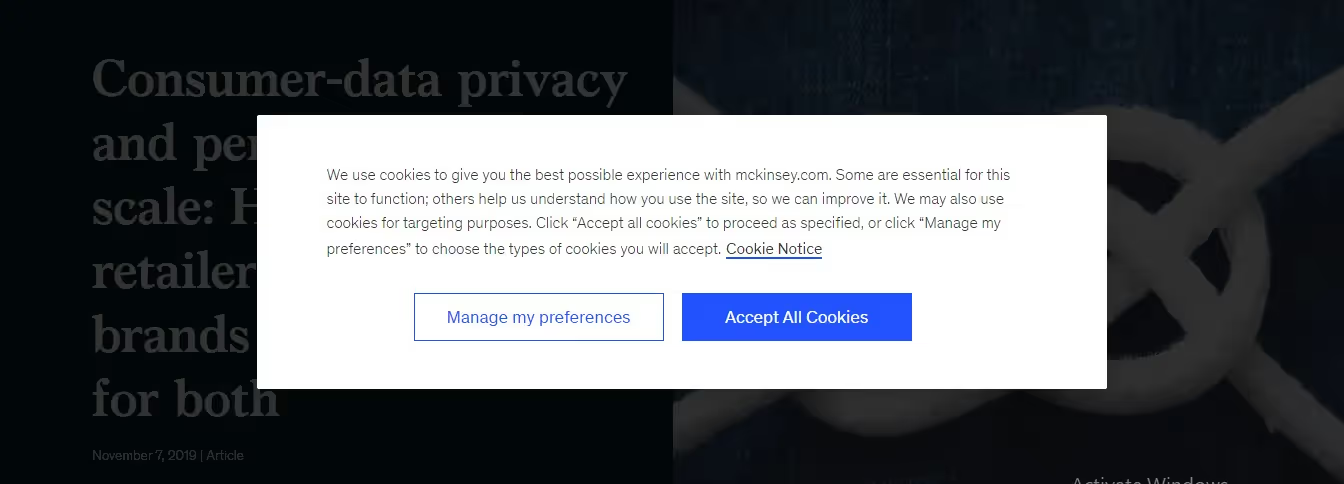
- No Clear Opt-Out for Data Sharing:
A frequent mistake is not giving users the ability to opt out of having their data shared with third parties. For instance, if your landing page collects email addresses for a free guide but also shares these addresses with partner companies for marketing purposes, users must have a clear option to opt out of this sharing. Without this option, users might feel their data is being used unfairly, leading to a loss of trust.
- Not Mentioning Data Transfers Across Borders:
Companies often transfer data between servers located in different countries, but this isn't always disclosed. For example, if your landing page collects data from users in Europe but stores that data on servers in the U.S., GDPR requires you to inform users about this cross-border data transfer. Failing to do so could result in non-compliance with international data protection laws.
- Neglecting to Include Data Breach Notification Policies:
Many businesses fail to mention what happens in the event of a data breach. Users should know if and how they’ll be notified if their personal data is compromised. For instance, if your landing page captures credit card information for payments and your servers experience a security breach, your privacy policy should specify how and when you’ll inform affected users. Not providing this information could lead to a reputational hit in the event of a breach.
- Incomplete User Rights Explanation:
Another common mistake is not fully explaining users' rights regarding their personal data. For instance, GDPR gives users the right to access, rectify, or erase their data. Your privacy policy should clearly lay out these rights and explain how users can exercise them. If users don’t understand their rights or how to manage their data, they might lose trust in your business, and you could face regulatory penalties.
- Assuming Users Understand Legal Jargon:
While not a direct legal mistake, writing a privacy policy filled with legal jargon without offering simple explanations can alienate users. For example, phrases like "data controllers" or "data processors" might confuse average users. Instead of relying solely on legal terms, you should explain these terms in plain language to ensure users understand how their data is managed. Ignoring this can make your policy seem less transparent.
- No Clear Explanation of Consent Withdrawal:
If users initially provide consent to data collection, they should be able to withdraw it easily, but many landing pages fail to make this clear. For example, if your landing page asks for consent to send promotional emails, the privacy policy should clearly explain how users can later withdraw their consent (e.g., via an unsubscribe link). If this isn’t clearly stated, users might feel locked into giving their data without a way out.
- Failure to Mention Third-Party Payment Processors:
If your landing page accepts payments via third-party services like PayPal, Stripe, or others, your privacy policy should disclose this. For example, if users are directed to a third-party payment page, they should know that their data is handled by the payment processor, not just your business. Failing to mention this could leave users unaware of where their financial data is going.
Creating No-Code, Compliant Landing Pages with Thriwin
When building landing pages, ensuring they are compliant with privacy regulations is essential. Using no-code tools makes the process simpler for non-technical users while still adhering to the necessary legal standards. By prioritizing privacy policy integration, you can protect user data and build trust, all while keeping the process straightforward and efficient.
Thriwin makes this process even easier by offering a no-code platform that enables businesses to build seamless solutions, compliant landing pages without needing extensive technical expertise. Designed with simplicity in mind, Thriwin allows you to quickly integrate critical components, such as privacy policies, cookie consent notices, and opt-out forms, ensuring your landing pages are both user-friendly and fully compliant with data privacy laws.
For fast-growing companies, Thriwin stands out by enabling businesses to build fully customizable landing pages that cater to specific business needs. The platform’s flexibility ensures that your landing pages not only meet legal compliance but are also optimized for conversions, all without the need for coding. With seamless integrations and full support, Thriwin helps businesses streamline the process of creating compliant, effective landing pages.
From day one, Thriwin provides hands-on guidance, free onboarding support, and customization options to help businesses start generating revenue quickly. The no-code approach means that small and mid-sized businesses (SMBs) can focus on scaling their operations while ensuring that their landing pages remain compliant with legal standards.
FAQs
Q1: What should be included in a privacy policy for landing pages?
A privacy policy for landing pages should include information on data collection, storage, usage, third-party sharing, cookies, user rights, and contact information.
Q2: Is it legally required to have a privacy policy on landing pages?
Yes, depending on your location and the data you collect, laws such as GDPR, CCPA, and others may require a privacy policy.
Q3: How can I ensure my privacy policy complies with the law?
Research relevant regulations based on your target audience's location and regularly update your privacy policy to align with changes in the law.
Q4: Where should I place the privacy policy on my landing page?
The privacy policy should be easily accessible, typically linked in the footer or within forms where personal data is collected.
Q5: How often should I update my privacy policy?
You should review and update your privacy policy regularly, especially when legal requirements or data handling practices change.
%201.svg)


